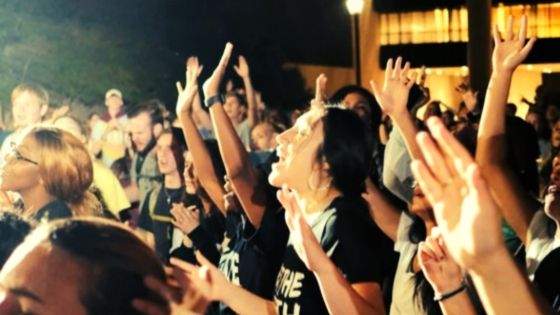To discover why we sing at Mass, we have to understand “sacrament.” We tend to think of sacraments as objects that we get. There are seven of them, and we get them at important moments in our lives. “Sacrament” has a bigger meaning, however. The word New Testament writers, who wrote in Greek, used for “sacrament” is mysterion, which, in English, is “mystery.”
The mystery the New Testament writers want to reveal is the central mystery of our faith, which is the mystery of the Trinity.
We are baptized into that mystery, in the name of the Father, Son, and Holy Spirit. And everything about our lives is then part of the mystery of the Trinity. Or, if want to say the same thing using the Latin word instead of the Greek, our whole life is sacramental.
How does God speak to us?
The church names seven important, powerful moments when the mystery of the Trinity is revealed in a big way. But God’s revelation is not limited to those seven moments. All of creation is sacramental because it reveals God. Every human situation is sacramental because God is present in it. In fact, each of the official seven sacraments is a fundamental human act: washing, anointing, eating, forgiving, promising, ordering, healing.
The Catechism of the Catholic Church says God speaks to us “through the visible creation…. Light and darkness, wind and fire, water and earth, the tree and its fruit speak of God and symbolize both his greatness and his nearness” (1147).
The music we sing in the liturgy is a symbol of the mystery of the Trinity. When a specific assembly gathers on a specific day and sings God’s praise, that song is changed forever. Share on XGod also speaks to us through music, especially music we sing in the liturgy. We sing because our singing reveals the mystery of God. Our singing is sacramental.
Another way to say that is to say our singing is symbolic. “Symbol” is another Greek-based word that can have either a limited or a broad meaning. Sometimes we use “symbol” to mean a kind of substitute for the real thing—something not quite real or pretending to be real. For example, a toy car is not a car, but only a symbol of a car.
However, in the liturgy, “symbol” has a broader meaning. The word is actually two Greek words that are thrown together. Syn means “together.” And bállō means “I throw.” So the two thrown-together words literally mean “to throw together.”
Using symbols in the liturgy changes us… and the symbol!
In the liturgy, we take two (or more) ideas or realities and throw them together. For example, in the marriage rite, we take a ring and throw it together with the reality of everlasting love. The ring then becomes a symbol of the couple’s love.
That ring is not like the example of the toy car. It is not merely a substitute for the real thing. But neither is it the actual love you have for your spouse. The ring-symbol points to and reveals the larger mystery of your love and somehow participates in the larger mystery of your love in a unique way.
Once a specific ring is thrown together with a specific person’s love, it is changed forever. No other ring will be able to substitute for it. So if you lose your wedding ring, you can get another ring. But you cannot get another wedding ring.
In a similar way, the music we sing in the liturgy is a symbol of the mystery of the Trinity. When a specific assembly gathers on a specific day and sings God’s praise, that song is changed forever. We might sing the same song the next week, but it won’t have the exact meaning as the song we sang earlier. Each time we gather as a church and sing, a new aspect of divine mystery is revealed.
The U.S bishops said:
This sacramental principle is the consistent belief of the Church throughout history. In Liturgy, we use words, gestures, signs, and symbols to proclaim Christ’s presence and to reply with our worship and praise. (Sing to the Lord, 6)
In the liturgy, singing is not just an optional thing we do to make the ritual more interesting. It is not merely symbolic in the way a toy car is a symbol of a real car.
Music in the liturgy is essential. It is symbolic in the way a wedding ring is. It reveals and participates in the mystery of the divine Trinity. And when we gather as a church to sing, we are changed forever.
See also these related articles:
- You are witnesses
- Pastoral liturgists are “keepers of the fire”: The third level of liturgical participation
- Moving from technique to artistry: Three levels of liturgical participation
- How your liturgical ministry changes the world
- Do you remember the liturgical revolution of Vatican II?
- Liturgical participation: if you’re not doing, you’re not learning
- How Madison Avenue is sabotaging our worship
- A singing church is symbolic of the divine Trinity
- Singing with our ancestors in faith
- Music is the sacramental sign of God’s love for us
Image credit: Cason Asher, Unsplash


Leave a Reply